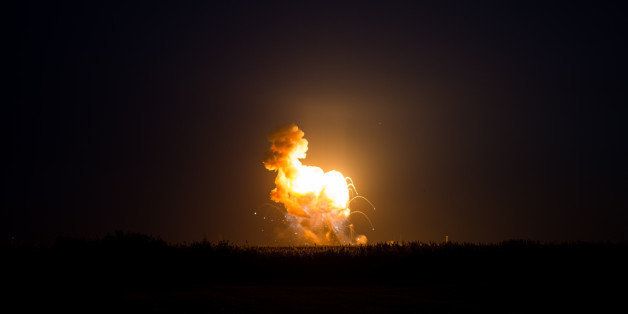
In the aftermath of the recent loss of Orbital Sciences Antares, some have criticized NASA's reliance on commercial providers, and specifically Orbital Sciences. This is a subject matter upon which I have a unique understanding and perspective. I am the first second-generation astronaut, an investor in many commercial spaceflight companies and have served on the NASA advisory council. While my opinions are clearly my own and neither that of the commercial industry nor NASA, they are informed by growing up as part of the NASA family, and having a foot planted firmly on both sides of the government and commercial sides of this discussion.
It is important to understand the broad context for why it seems to be hard to make inexpensive or reliable rockets. Unlike cars and planes which have high flight rates, the lifetime launches of a particular rocket system is low. And the lifetime of an individual rocket is usually one launch. Thus there are few opportunities to expose and work out the flaws in the general system design, much less in the manufacture of an individual rocket. While rocket components are tested individually and again once assembled, there is no stress quite like the actual launch itself to ultimately see if it's all working fully.
Interestingly in Russia, the Soyuz Spacecraft in which I flew, has a 35-year perfect safety track record. One of the main ways in which this has been accomplished is that the Russians have iterated since their first launch vehicle for Sputnik, through Vostok that took Gagarin into space, and every subsequent model of Soyuz including the one I flew on. While the system has slowly gained capabilities, it has also grown to be safer and safer. The only fatalities aboard Soyuz were in its earliest days. Contrast in the USA. We first launched people aboard an ICBM for Mercury, then a new vehicle for Gemini, another unrelated vehicle for Apollo, then the "design by congressional committee" Space Shuttle, which was the least safe and most costly of all. Now we are starting over yet again. New designs, with no flight rate history. Thus starting over again from a safety standpoint.
As for the loss of the Orbital Sciences vehicle specifically. Orbital has a quality team, doing their very best, and I am sure they and their launch systems will get better with launch cycles, as is true for each launch system and team. I am personally invested in teams that had hardware lost on that launch, and those teams will surely struggle due to this loss. Yet, for our nation and for NASA, this move to commercial operations is essential, and will ultimately provide far greater safety, more frequent access and cheaper access, than was possible before -- likely by cost and safety margins of 10X or better!
What will ultimately get us out of this vicious circle of low flight rates for rocket technology will be true full reusability. This is what Space X is championing and making great progress towards. They have already landed their first stage twice (in the ocean) and their Dragon Capsule will soon be able to use its combination powered abort and landing system. Even if they too have some failures along the way, this is key to bringing down costs and increasing safety through flight rates. The British are working on a vehicle called Skylon, which if/when finished could fulfill this requirement. Also my wife's company Escape Dynamics, is building a Single Stage to Orbit Space Plane, powered via external electromagnetic energy. In time, these fully reusable, high flight rate systems, will win in the cost and safety race.
Until we reach a large number of flights on a given system, we should be prepared for periodic failures -- far more than we would expect or tolerate with our cars and planes. And since we hope to put people atop many of these systems, we need to reach high flight count goals as soon as possible! It will be hard to consider truly democratized affordable access to space for the general public, until we do so.